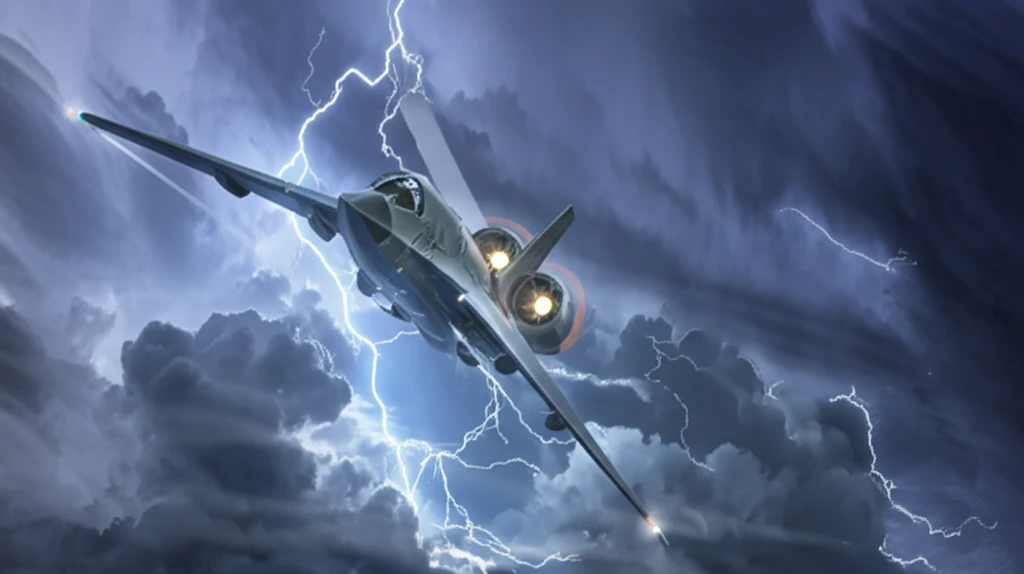
Stabilizing Tomorrow's Skies: How Advanced Control Systems Are Revolutionizing Aircraft Safety
"Explore the innovative flight control technologies ensuring safer, more reliable air travel in an era of increasing complexity."
The aviation industry is constantly evolving, pushing the boundaries of what's possible in terms of aircraft performance and maneuverability. Modern fighter aircraft, in particular, are expected to perform complex maneuvers with incredible precision. This demand has spurred significant advancements in flight control systems, moving beyond traditional methods to incorporate more sophisticated and robust technologies.
Traditional aircraft flight controllers often rely on linearizing non-linear aircraft models at various operating points and using gain scheduling to manage the entire flight envelope. While effective, this approach can be challenging to implement across a wide range of flight conditions. Furthermore, the non-linear nature of aerodynamic forces and moments, especially at high angles of attack, necessitates more advanced control strategies.
This article delves into the innovative realm of flight control systems, exploring how cutting-edge techniques like finite-time sliding mode control and super-twisting control are enhancing aircraft stability, turbulence resistance, and overall safety. These advancements promise to revolutionize the way aircraft are controlled, paving the way for safer and more reliable air travel.
The Quest for Enhanced Flight Control: Navigating Turbulence and Uncertainty

To tackle the complexities of modern flight control, researchers have turned to advanced non-linear control techniques, particularly those that offer robustness in the face of uncertainties and disturbances. One such approach is the use of Variable Structure Controllers (VSC), designed for nonlinear aircraft models with inherent uncertainties. However, VSC controllers, being discontinuous functions of state variables, can sometimes introduce abrupt changes, potentially leading to tracking errors. While smoothing techniques exist, they may not always eliminate these errors completely.
- Finite Time Stabilizing (FTS) Control: Ensures rapid convergence and stability even under disturbances.
- Discontinuous Sliding Mode (DSM) Control: Provides robustness against uncertainties but may introduce chattering.
- Super-Twisting (STW) Control: Offers a continuous control action, reducing chattering while maintaining robustness.
Charting the Future of Flight Control: Enhanced Safety and Reliability
As the demand for safer and more agile aircraft continues to grow, innovative flight control systems, employing techniques like finite-time sliding mode and super-twisting control, are poised to play a pivotal role. These advancements offer enhanced robustness, stability, and precision, ensuring aircraft can navigate complex maneuvers and challenging conditions with greater confidence. While questions regarding control and rate constraints remain, ongoing research promises even more refined and effective solutions, solidifying a future where air travel is safer and more reliable than ever before.
